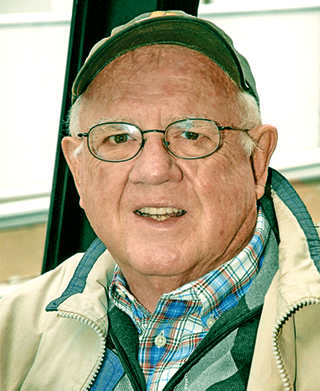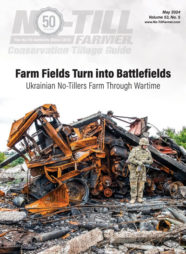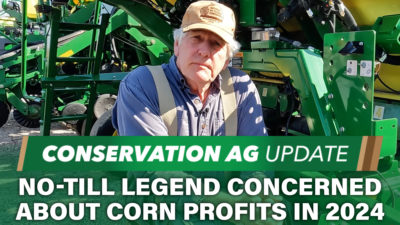With no-till corn acres taking a beating in 1998 in some areas, farmers are looking for ways to overcome these concerns.
Many farmers and educators believe some type of row cleaning needs to be done prior to no-tilling to help get the crop off to a faster start. Some no-tillers have relied on strip-tilling and fertilizing in the fall and then planting directly into these raised strips the following spring. Others run row cleaners and other attachments over the field a few days ahead of no-tilling to warm and/or dry out the soil.
The Grow-Zone Rig
Veteran no-tiller Terry Schneider has come up with his own novel way of warming up the soil prior to no-tilling. Instead of fall strip-tilling, the Shirley, Ill., no-tiller lays out strips where he clears the row area and applies fertilizer to no-till corn ground three weeks to five days ahead of planting.
“Actually, we’d prefer to get a rain on the strips after they’ve been wiped before we no-till,” says the farmer who’s been no-tilling successfully since 1984.
After sidedressing nitrogen for nearly 20 years, Schneider likes the results of this new row wiping and early fertilizing system. Four weeks after planting, he’s measured as many as 100 extra heat units in wiped strips compared to the heat units found in crop residue located next to the cleared areas.
He finds the strips cool down faster at night than the soil found under the residue. The difference for maximum soil temperature with unworked areas and the wiped strips can be as much as 10 to 12 degrees F. in favor of the “Grow-Zone” areas. He finds soil temperatures in wiped strips are also often 2 to 4 degrees F. warmer than corn no-tilled into fall strip-tilled mounds.
Other No-Till Corn Options
During the Jan. 21 to 23, 1999, National No-Tillage Conference in St. Louis, Mo., crop consultant Joe Nester will discuss his experiences in using a Phillips rotary harrow as a row-wiping tool five to seven days ahead of no-tilling corn. Rotary harrows have been successfully used by a number of Western U.S. and Canadian prairie small grain no-tillers for several years to control residue.
“The idea with this tool is to clear a narrow strip of residue where the corn will be no-tilled to raise the soil temperature and speed the soil drying process,” says the crop consultant from Antwerp, Ohio.
“Soil temperature rises in the cleared strips and the soil dries faster, helping the no-tilled corn get off to a faster start. Yields on the row-wiped fields produce higher yields and drier corn. The row wipers are economical and can cover more acres quickly with low horsepower requirements.”
A number of other speakers will tackle a number of the concerns with no-till corn during the St. Louis event. For example, Cliff Ramsier of Ag Spectrum in Dewitt, Iowa, will provide details on why many farmers get out of no-tilling corn for the wrong reasons and show how these critical concerns can be readily overcome.
See pages 5 to 16 in this issue for a complete in-depth listing of the program for the seventh annual event. See you in St. Louis!







Post a comment
Report Abusive Comment